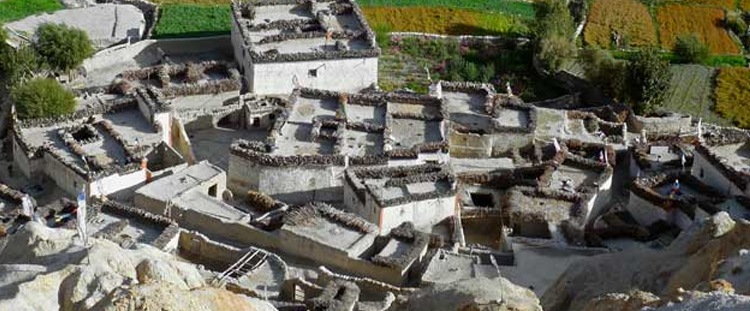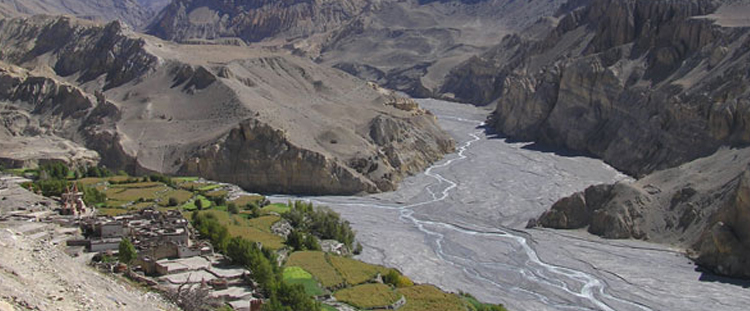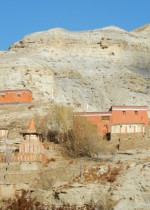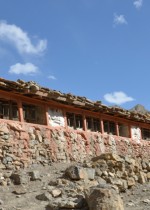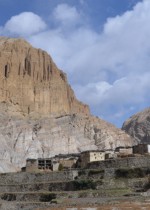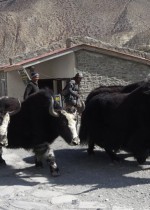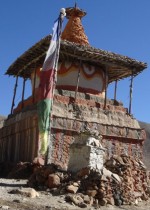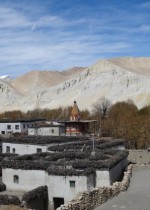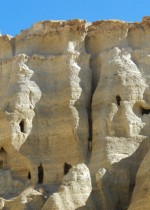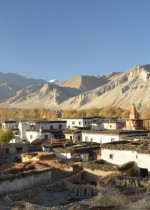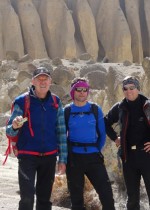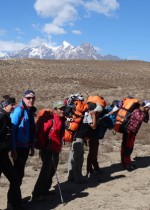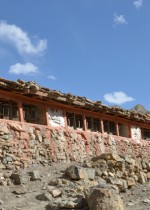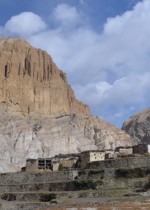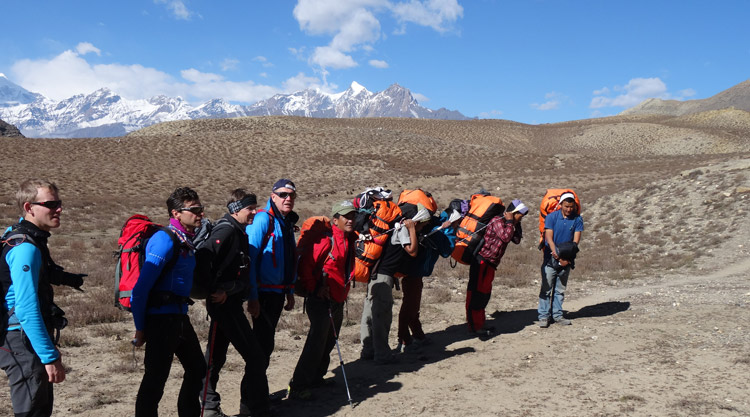
Mustang Cultural Trek Overview

Mustang Cultural Trek : 19 days
Trek Grade : Moderate
Trek Style : Tea House Trek/Camping
Best time to go : Year round
Price : Request for price
Jomsom, trade center of Annapurna region famous for apple production
The Holy Muktinath Temple
Ghorepani, one of the famous Gurung Village in Annapurna Region
Poon hill, high hillstop for mountain view of Annapurna, Fishtail, Dhaulagiri, Manaslu etc.
- Mustang Cultural Trek Overview
- Trip Itinerary
- Services Included and Excluded
- Ask the Expert
- Similar Trips
MUSTANG CULTURAL TREKKING IN NEPAL DETAILS
Mustang trek is an exceptional, extended trek in a remote and wholly unique corner of Nepal to the boarder of Tibet – a great cultural trek of the Himalaya,
Mustang the last Forbidden Kingdom in Nepal also known as the Lost Tibetan Kingdom!
The small kingdom of Mustang Nepal closed to westerners until 1992 is an enchanting land of windswept vistas, red walled monasteries, and feudal towns. This tiny kingdom was not only a major corridor of trade from the 1400’s to before the Chinese occupation of Tibet, but also figured importantly into early Buddhism in Tibet. The landscape and village of upper Mustang nepal
Local legend tells the tale of the great founder of Tibetan Buddhism, Padmasambhava (Guru Rimpoche), who before building Samye (the oldest monastery in Tibet) came to Mustang to stand guard against and do battle with the evil powers out to destroy Buddhism. The temple of Lo Gekhar in eastern Mustang was built by Padmasambhava after his triumphant battle and still stands guard today.
Our route of Mustang trek will take us across the vast Kali Gandaki riverbed, up over windswept passes at 14,000 ft. and across the ‘Plain of Aspirations’ to the walled capital city of Lo Manthang. All this through a landscape of indescribable vastness and beauty, home to the infamous snow leopard, the endangered bharal (blue sheep), and the mythical mehti (abominable snowman).
Rimmed by 20,000+ snowcapped peaks and bathed in hues of orange and red rocks with sporadic fields of vibrant green, yellow and red of barley, maize, and buckwheat, Mustang is a step back to a simpler time. The Annapurna and Dhaulagiri massifs provide an impressive backdrop as you trek up the Kali Gandaki river valley to the ancient city of Lo-Manthang.
Mustang is quintessentially Tibetan in character and to date largely unspoiled. However, the advent of a planned new road (progressing slowly) is likely to change this – the time to see Mustang is now!
MUSTANG CULTURAL TREK
The Tiji Festival (Festival in the Forbidden Kingdom, Mustang Lo- Manthang), Every year in May
Portions of the following account of the Tiji Festival are excerpted from book : East of Lo Manthang: In the land of Mustang. Peter Matthiessen and Thomas Laird, Shambhala Press, Boston, 1995 and Mustang, a Lost Tibetan Kingdom. Michel Peissel, Book Faith India, Delhi, India, 1967.
“We found ourselves in the midst of a festival in which over a thousand men, women and children were taking part. Before us spread a sea of weather-beaten brown faces that contrasted with those of the beaming, dirty little children who clung like grapes upon the rooftops of the houses” ” The women? looked superb in hand-woven sleeveless Chubas (a bath-robe style dress made of thick wool) over bright, loose silk blouses. Around their wastbands were tucked two aprons, a short one that hung down in front, the other caught in the belt and hanging down behind to the ground. These were gaily striped in bright, narrow bands of blue, red, green and yellow. Many women were literally smothered with ornaments of silver and precious stones?necklaces of bright orange corralline stones alternating with turquoises?ivory-white bracelets made of truncated conch shell (and). head-dresses?studded with turquoises ran along the central parting of their hair and fell down their backs. – ” Michel Peissel
Michel Peissel was the first westerner to witness the Teji festival in 1964 during a visit to Mustang by special permission of the Government of Nepal. He was also only the third westerner to ever visit Mustang. He arrived in Lo Manthang in time to witness only the last day of the festival and later wrote: “The scenes I witnessed were so extraordinary and so unexpected that I dared not believe my eyes and even today I have some trouble in believing in the reality of what I saw that day.”
The Tiji festival is a three-day ritual known as “The chasing of the Demons” that centers on the Tiji myth. The myth tells of a deity named Dorje Jono who must battle against his demon father to save the Kingdom of Mustang from destruction. The demon father wreaked havoc on Mustang by bringing a shortage of water (a highly precious resource in this very dry land) and causing many resulting disasters from famine to animal loss. Dorje Jono eventually beats the demon and banishes him from the land. Tiji is a celebration and reaffirmation of this myth and throughout the festival the various scenes of the myth will be enacted. It is of course timed to coincide with the end of the dry winter / spring season and will usher in the wetter monsoon season (the growing season for Mustang).
Tiji comes from the word “ten che” meaning the hope of Buddha Dharma prevailing in all worlds and is effectively a spring renewal festival.
Mustang trek itinerary
Day 1: Arrivel in Kathmandu international airport transfer to hotel
Day 2: Kathmandu valley sight seen
Day 3: Kathmandu to Pokhara by flight overnight in Pokhara
Day 4: Early morning flight from Pokhara to Jomsom trek to Kagbeni overnight tent camp
Day 5: Kagbeni to Chusang overnight tent camp (2980 m)
Day 6: Chusang to Samer (3660 m)
Day 7: Sammer to Gheling (3570 m)
Day 8: Gheling to Dhakmer ( 3820 m)
Day 9: Dhakmer to lo manthang via lo Ghekar-Samdruling, overnight camp at Lo Manthang (3809 m)
Day 10: Lomanthang to visit to Chhoser cave& overnight Lo Manthang tent camp
Day 11: Lomanthang to Yera overnight tent camp
Day 12: Yera to Luri cave monastery Gompa visit back to Yera overnight tent camp
Day 13: Year to Tangya overnight tent camp
Day 14:Tangya to Chhusang long day trek overnight tent camp
Day 15: Chusang to Kagbeni overnight tent camp
Day 16 : Kagbeni to Jomsom trek ending point
Day 17 : Early morning flight to Pokhara and same day flight to Kathmandu overnight in hotel
Day 18 : Half day sight seen & prepare for Departure
Day 19 : Departure for distination transport to airport by van /bus /jeep’
Cost Includes
1. All accommodation in 3 star hotels in cities on bed and breakfast basis
2. All Ground transportation
3. Kathmandu sightseeing with city tour guide
4. Full board meal during the trekking [Breakfast, Lunch, Dinner]
5. Govt. trained guide and necessary no. of porters with their insurance, salary and meals
6. Last Night cultural show and fare well dinner
7. All entry fees and TIMS permit
8. All Domestic Flight according to Itinerary
9. Restricted Area Permit
Cost Excludes
1. International Flight and Nepal entry visa fee
2. Major meals in Cities
3. All personal expenses such as bar bills, beverage, snacks etc.
4. Personal travel insurance and medical kits.
5. Extra shower, battery re-charge, laundry charge etc.
6. Personal clothing and gears
7. Tips to guide and porter
8. Emergency rescue evacuation in case we needed.
NOTE- : The itinerary can be customized according to your duration of holiday. Similarly hotel can be upgraded or downgraded depending on your requirement
Please fill the form

